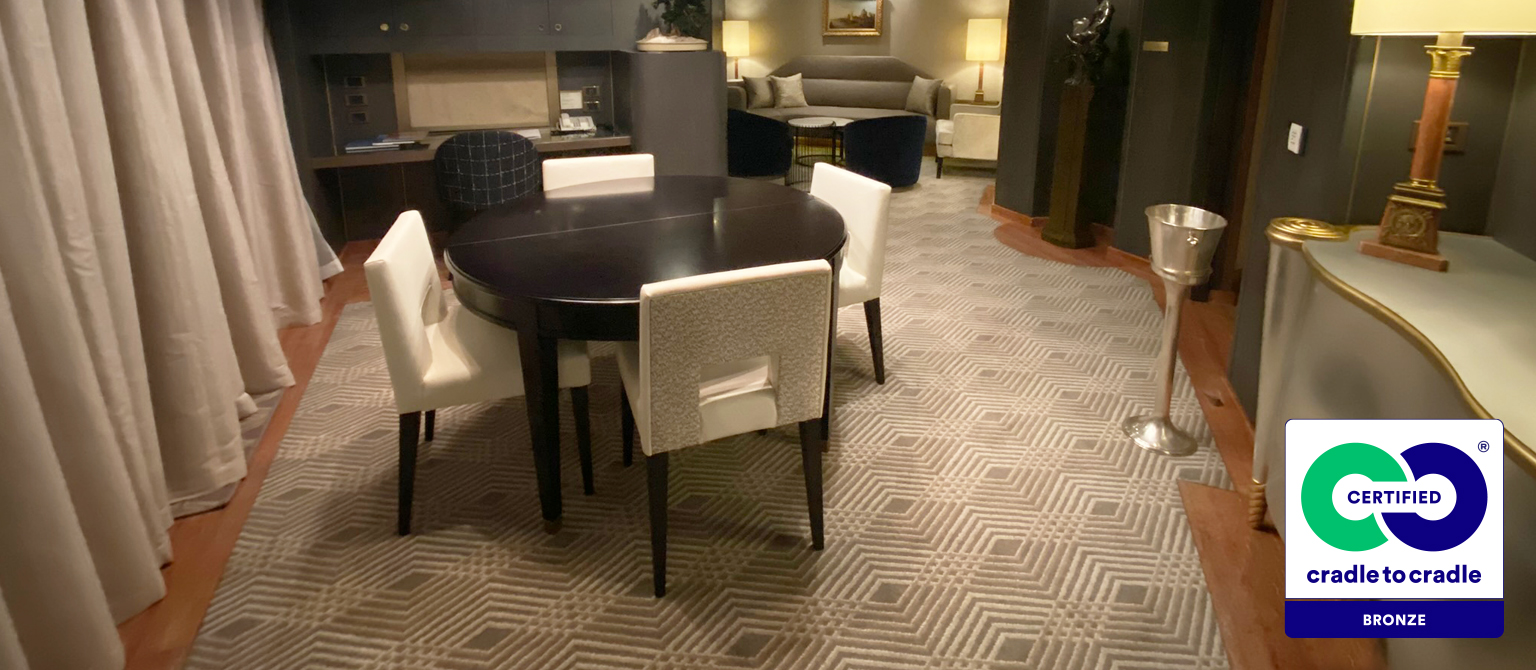NEWS /
Responsible Cabin Design
Responsible cabin design is about everything from energy optimisations to the selection of interiors – and all in between.
Responsible cabin design is about everything from energy optimisations to the selection of interiors – and all in between.

Designing cabins with environmental, economic, and social impacts in mind is particularly important as any sustainable accomplishment can have a much bigger impact when multiplied by the number of cabins on a cruise ship.
Responsible cabin design is about everything from energy optimisations to the selection of interiors – and all in between.
Responsible cabin design is not just about CO2 optimisations, but about healthy materials produced in a responsible way, and which contribute to a healthy indoor climate. All this without compromising on the strict requirements for materials on board a ship and not least the aesthetic expression that must support the good design and guest experience.
Read our case story “Sustainability in passenger ship interiors: A new era”
The requirement for an IMO certification is fundamental for cruise ship interiors, but it limits the possible choice of materials. As Petra Ryberg, Head of design at P&O Australia, puts it in an interview with Dansk Wilton:
“It feels like you are left with what is IMO certified, but we need to understand what the better option is in terms of sustainability.”
Read the article based on the interview with Petra Ryberg.
However, knowing what the better alternative is in terms of sustainability can be challenging. Lack of knowledge and documentation makes it difficult, and this is where a certification can be supportive. At the same time, it is important to take a broad perspective, so that the focus is not only on CO2, for example, but on all essential aspects of sustainability.
Cradle to Cradle Certified®
Petra Ryberg points out that this is one of the strengths of the Cradle to Cradle certification system; it embraces many aspects of sustainability and the whole lifecycle of the product.
Speaking of the lifecycle of products, the aim should be to introduce a circular economy, where waste does not exist at best. We all face a huge challenge – designers, suppliers, shipowners, shipyards, and all other stakeholders in the industry. We need to develop innovative and technological solutions to recover our “waste resources” and these solutions need to be translated into systems that can be implemented, for instance during drydocks.
As part of our Cradle to Cradle certification, Dansk Wilton is working on initiatives to form the path for recycling carpet waste. One of the iniatives is called RE:SHAPE.
“It is essential that we have recycling and introducing a circular economy as top priority. It is a long and complex process and sometimes we feel like modern-day explorers – on a quest into uncharged land. We know where we would like the journey to end but not necessarily the way to get there”
Søren Sonne, CEO at Dansk Wilton.
